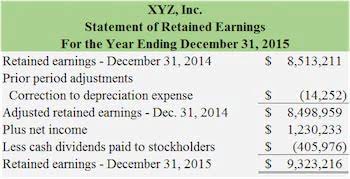
We will identify users of nonprofit financial statements and the procedures for obtaining 501(c)(3) tax-exempt status. We will further our understanding of the requirements and steps for 501(c)(3) qualification as well as identify potential events leading to the loss government and nonprofit accounting of tax-exempt status. Additionally, we will learn about the major components in the Statement of Financial Position. Lastly, we will identify the two components of nonprofit net assets and differentiate between conditional and unconditional promises to give.
Module 8: Statement of Cash Flow for Proprietary Funds and Component Unit Reporting Requirements
- This method helps nonprofits manage their finances effectively by matching revenues with the period in which they are earned and related expenses are incurred.
- We will learn about how these two funds are reported on both the fund level and the Government-wide level.
- In the realm of financial management, government and nonprofit organizations each operate under distinct accounting frameworks that cater to their unique needs and objectives.
- Your subscription will automatically renew at the end of your term unless you cancel it.
- Pearson+ offers instant access to eTextbooks, videos and study tools in one intuitive interface.
- This comprehensive, up-to-date textbook covers state and local government, federal government, and not-for-profit organization accounting, financial reporting, and auditing, and prepares students well for real-world practice.
They too use fund accounting and offer up financial statements for public consumption each year. CAFRs often present financial information for individual funds (or at least significant funds) as well as governmentwide financial statements that show the position of the government as a whole. Nevertheless, understanding what fund accounting is and how it works is the only way to confidently look at the financial publications that governmental and nonprofit organizations publish each year. Unlock the full potential of your nonprofit organization with our professional accounting software training team from Capital Business Solutions.
What assessments are required for successful completion?
Lastly, we will account for transactions for both proprietary funds and create financial statements. The reporting requirements set forth by government and nonprofit accounting sectors significantly impact how financial statements are prepared and presented. One of the primary distinctions between government and nonprofit accounting lies in the governing bodies that set their respective financial reporting standards. Research in Governmental and Nonprofit Accounting is the only academic journal dedicated exclusively to governmental and nonprofit accounting and reporting issues.
How do Channels subscriptions work?

If you find a nonprofit organization with exorbitant operating expenses, don’t give it your money. In the case of government, hold your politicians https://www.bookstime.com/ and governmental employees responsible for their actions. In this module, we will focus on the Statement of Cash Flow for proprietary funds.

- They too use fund accounting and offer up financial statements for public consumption each year.
- We will also refine our understanding of the five Categories of Fund Balance and practice classifying transactions into the five Categories of Fund Balance.
- However, many nonprofit organizations don’t allocate resources for a professional accountant to manage their finances.
- Expenditure tracking is a key area where government and nonprofit accounting practices differ significantly, each following specific methods to ensure proper use of funds.
- The Statement of Functional Expenses, a key component of nonprofit financial reporting, further breaks down expenses by function, enhancing transparency and accountability.
The Statement of Functional Expenses, a key component of nonprofit financial reporting, further breaks down expenses by function, enhancing transparency and accountability. At Capital Business Solutions, we specialize in nonprofit financial software consulting, helping organizations navigate generally accepted accounting principles (GAAP) for nonprofits with ease. Join us as we explore three major differences between government and nonprofit accounting, shedding light on the specific standards, practices, and principles that set them apart. In the realm of financial management, government and nonprofit organizations each operate under distinct accounting frameworks that cater to their unique needs and objectives. Understanding these differences is crucial for accurate financial reporting, compliance, and strategic planning.

What’s the Study & Exam Prep Pack?

Nonprofits Can Better Manage Overhead Expenses
- Many nonprofits are facing the decision of whether to accept digital assets or miss the chance of substantial donations as digital assets become more popular and easier to access.
- Our editorial team independently evaluates and recommends products and services based on their research and expertise.
- FASB’s standards are tailored to address the unique aspects of nonprofit operations, emphasizing the proper handling of donations, grants, and other forms of contributions.
- Because they are not out to make a profit, fund accounting provides the best accounting system for most nonprofit organizations.
- Good nonprofit financial management should ensure that the organization can function and grow.
- Connect®Course management, reporting, and student learning tools backed by great support.

Recent Comments